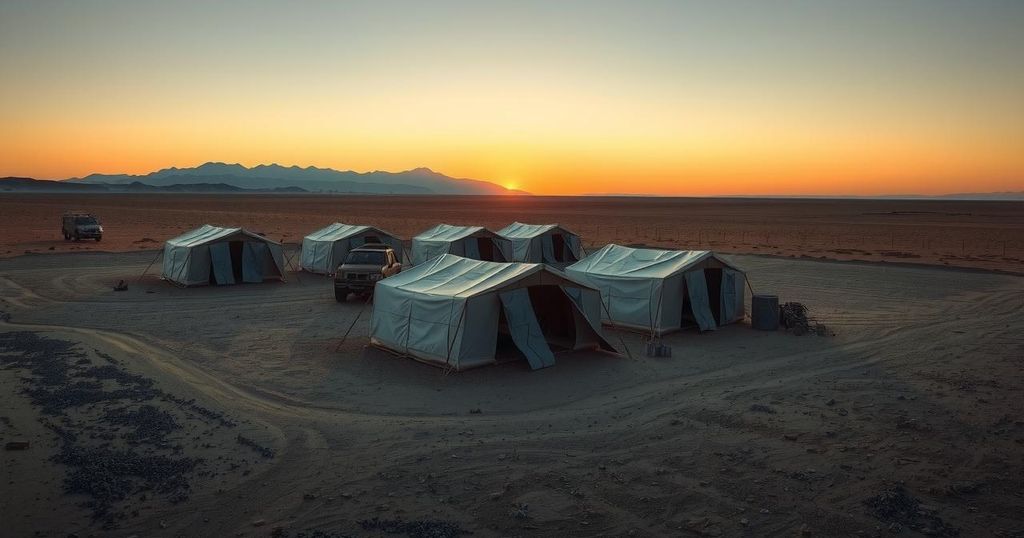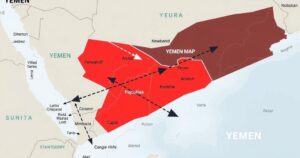The Abrupt Withdrawal: Iran’s Abandoned Military Bases in Syria

Iran’s military bases in Syria lie abandoned following a hasty retreat after a decade of involvement. With remnants of daily life left behind, including food and documents, the abrupt exit reflects internal strife and rapid changes on the battlefield. As local sentiments toward Iranian forces sour, the new leadership aims to forge a different path, distancing itself from Iranian influence while navigating relations with other powers like Russia.
Iran’s military installations in Syria now stand abandoned, revealing the remnants of a hasty withdrawal. Traces of past life include decaying food, discarded uniforms, and military equipment. The site, once a strategic location for Iranian forces, witnessed a rapid decline after a decade of military involvement supporting Syrian President Bashar al-Assad.
Situated near Khan Shaykhun in Idlib province, the base, formerly known as The Position of Martyr Zahedi, illustrates Iran’s significant investment in Syria. A receipt notebook indicating the purchase of daily supplies suggests normal operations persisted until the recent retreat. However, the base is now occupied by Uyghur fighters from Hayaat Tahrir al-Sham (HTS).
Deep tunnels and bunkers, once used by Iran’s Islamic Revolutionary Guard Corps (IRGC) and affiliated Afghan forces, remain intact. Documents left behind contain sensitive information, including personal details of fighters. The Iranian military presence was primarily justified as a defense against jihadi groups and to safeguard Shia holy sites.
Eyewitness accounts reveal that the retreat was precipitated by rapid developments on the ground, leaving little time for preparation. As orders reached IRGC-linked groups, many were instructed to depart with only their backpacks. Most of the forces fled to Iraq, while some sought refuge in Lebanon or under Russian protection.
The downfall of the Assad regime was fueled by internal tensions between Iranian allies and Assad’s forces, accompanied by external turmoil following Hamas’s attack on Israel. These events precipitated a crisis for Iran and its affiliates, amplifying already strained relationships. A disillusioned HTS fighter described the ensuing rift, noting the collapse of trust between Iran and Assad’s forces.
Locals who coexisted with the IRGC reflect mixed sentiments. While some express relief at the departure of Iranian forces, memories of military occupation linger. Abdo, a resident, characterized the situation as an “Iranian occupation,” underscoring the pervasive discomfort caused by the Iranian militia’s presence.
The Syrian government, under new leadership, appears to distance itself from Iranian influence, instituting bans on Iranian citizens while maintaining relations with Russia. Iran’s declining status in Syria is evident, as local populations articulate their grievances, preferring Russian involvement over that of Iranian forces.
In the ruinous aftermath of the abandoned base, traces of Iran’s military ambitions linger. Nearby, construction of new tunnels suggests continued plans for expansion, yet the stark evidence of conflict remains evident. Bullet casings and bloodied uniforms tell the story of a hasty exit from a once-prominent military foothold in Syria.
The swift abandonment of Iranian bases in Syria marks a significant turning point in the country’s military involvement and influence. The unchecked expansion that characterized Iran’s presence has crumbled, leaving behind evidence of both strategic failures and deep-seated resentment amongst Syrians. As new authorities distance themselves from Iran, the fate of Tehran’s long-standing aspirations in Syria remains uncertain.
Original Source: www.bbc.com








